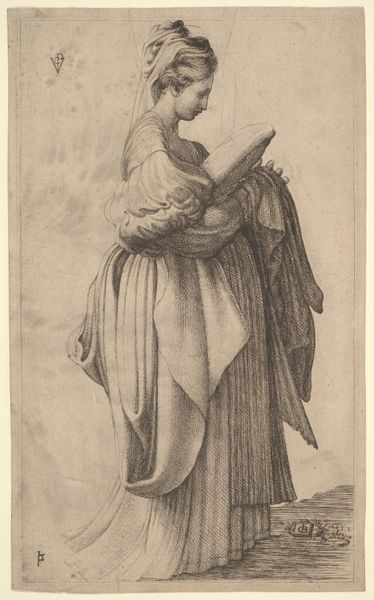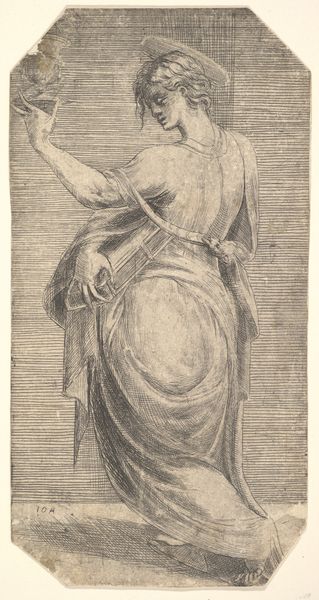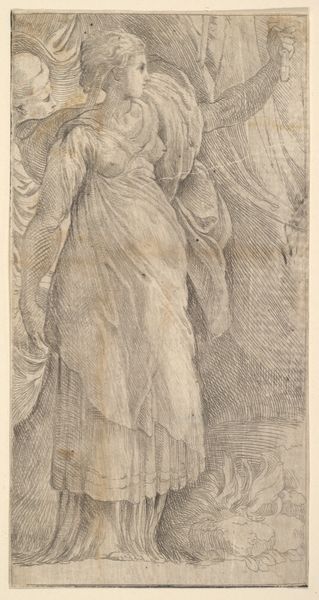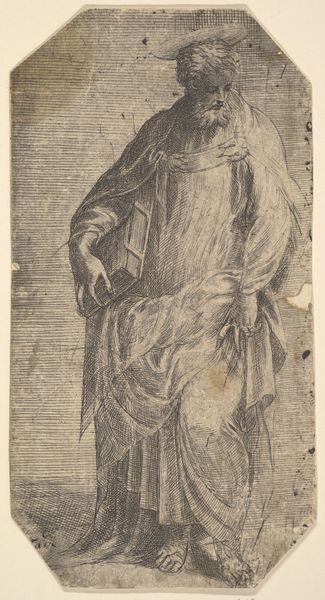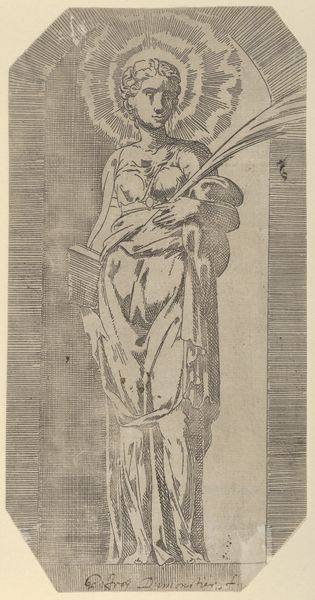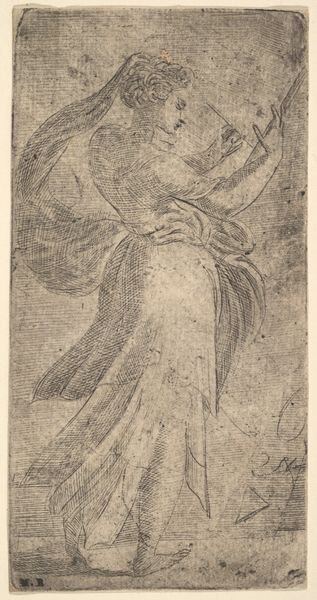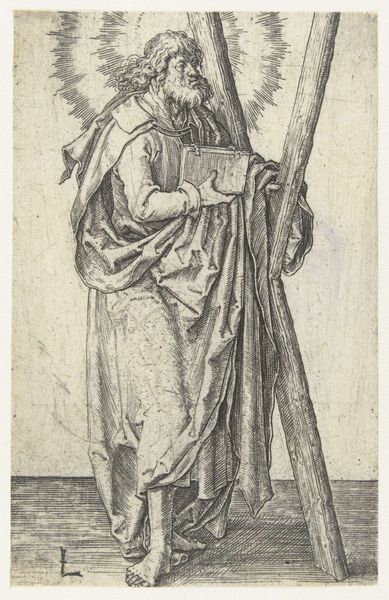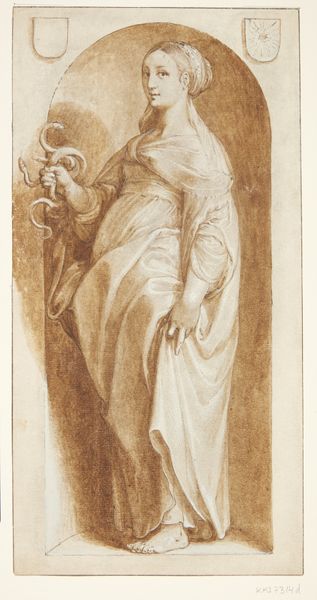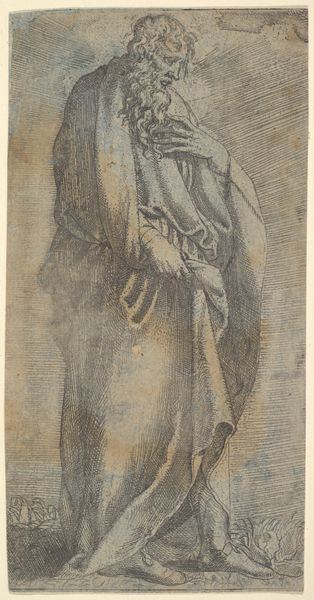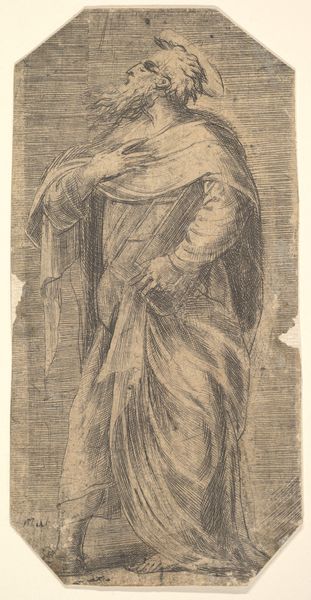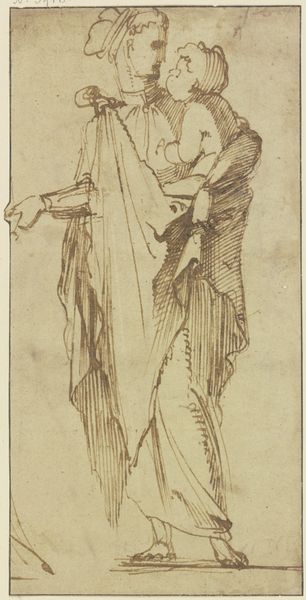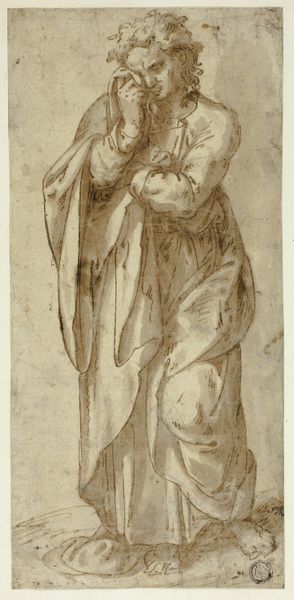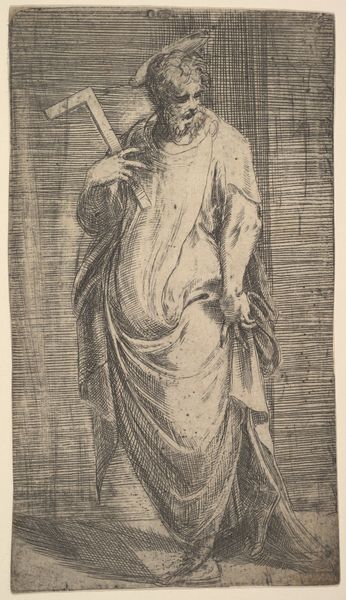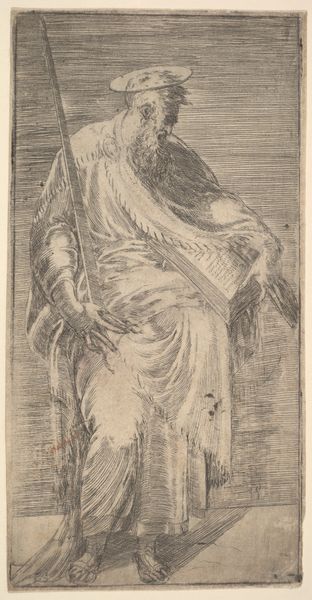
Saint Andrew holding a large cross, from "Christ and the Apostles" 1543 - 1553
0:00
0:00
drawing, print, etching, intaglio, engraving
#
portrait
#
drawing
#
narrative-art
# print
#
etching
#
intaglio
#
figuration
#
form
#
11_renaissance
#
cross
#
line
#
history-painting
#
italian-renaissance
#
engraving
#
christ
Dimensions: sheet: 8 11/16 x 4 1/2 in. (22 x 11.5 cm)
Copyright: Public Domain
Editor: So, this etching from the mid-16th century, "Saint Andrew holding a large cross, from 'Christ and the Apostles'," by Andrea Schiavone... It has a weight to it, not just because of the subject but also the dense lines used in the printmaking. It's quite powerful. What catches your eye? Curator: I am struck by how the cross, almost as tall as the saint, dominates the image, practically obscuring him. Saint Andrew isn't just holding it; he's almost enveloped by it. It evokes a deep cultural memory of sacrifice and faith, where the symbol supersedes the individual. Editor: That makes sense. The cross really is the focal point, despite St. Andrew being the named subject. Is that typical for religious art of this period? Curator: It's common, especially in post-Reformation art, to emphasize the tangible symbols of faith. Think of the cross not just as an object, but as a condensed narrative. What does the cross signify for you, beyond its obvious religious connotations? Editor: I suppose... burden, perhaps? And devotion. He looks almost weary but determined. Curator: Exactly. Schiavone uses this visual language to tap into our understanding of perseverance. The lines, though simple, carry centuries of artistic tradition, linking us back to the earliest Christian iconography. It's a kind of visual inheritance. Editor: So, even without knowing the story of Saint Andrew, we can feel the weight of his role through the symbol of the cross. Curator: Precisely. And it demonstrates how visual symbols compress complex narratives, carrying meaning across time and cultures. What a potent demonstration.
Comments
No comments
Be the first to comment and join the conversation on the ultimate creative platform.
